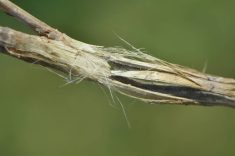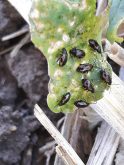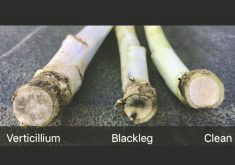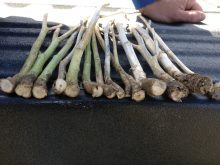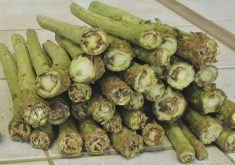Genetics are the tools of choice to minimize losses from blackleg, but there are signs that tried and true resistance genes might not be packing the same punch in every infected field.
Why it matters: Matching races of blackleg to resistant genes in canola varieties has been praised as a more precise way for growers to beat blackleg, but is it all it’s made out to be?
The fungal disease remains one of the most prevalent threats for canola, and got particular traction this year after a wet spring created friendly conditions for its development.
Read Also
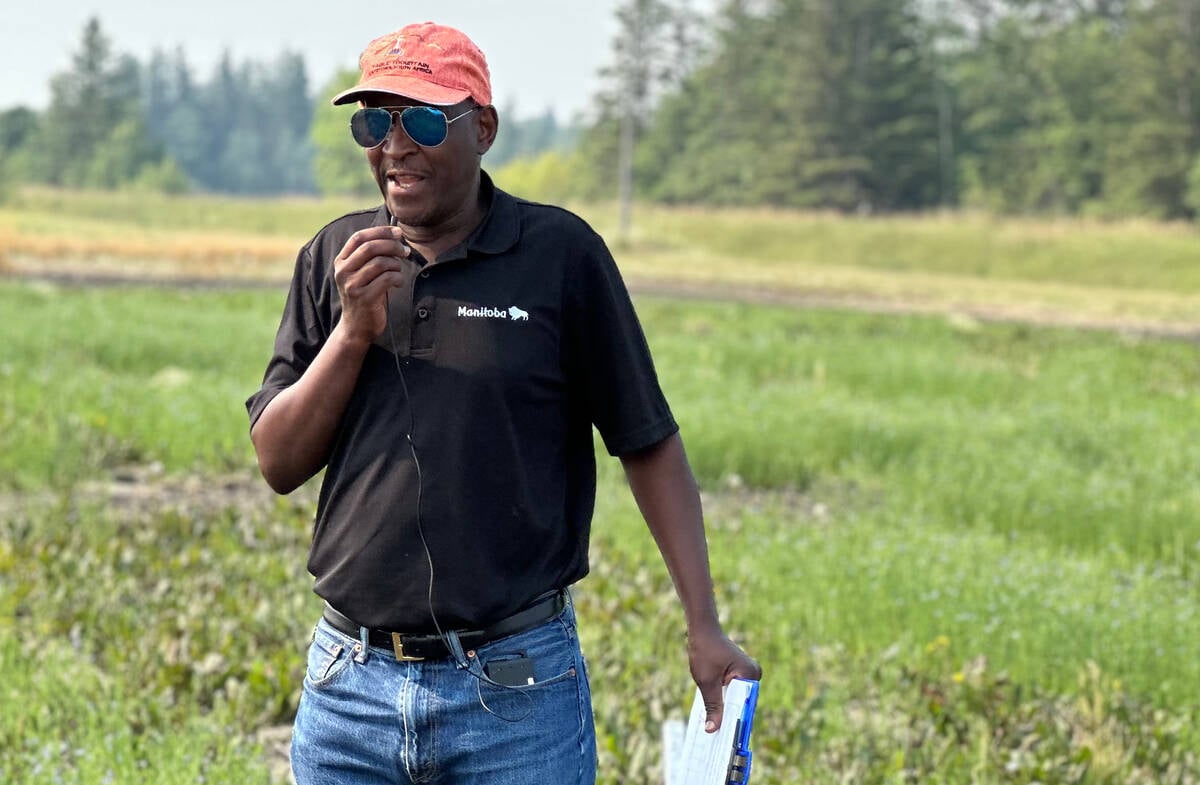
How much nitrogen can farmers really cut?
Manitoba fertilizer trials look for nitrification inhibitor sweet spot, to lower greenhouse gas emissions and cost without hurting yield.
Management has typically involved variety choice and crop rotation, noted the Prairie Crop Disease Monitoring Network.
“However, over the past 10-20 years there have been concerns regarding observed shifts in blackleg pathogen virulence in response to the major gene resistance used in a number of varieties,” the organization said. Basically, that resistance might not be as strong as the farmer thinks.
“Changes in virulence patterns emphasize the critical need to stay on top of this disease,” the resource added.
Blackleg race testing is one of the tools pitched to stay ahead of the fungus. The hope is that a farmer can identify exactly which races are present in the field and match them with resistance genes in a canola cultivar.
The blackleg gene test has been available for years. The Manitoba Canola Growers Association includes it in its suite of free testing available to members.
Knowledge from those tests can be a powerful tool in choosing the canola variety that suits a farmer’s resistance needs, said Clint Jurke, an agronomy specialist with the Canola Council of Canada at the time of interview. So far, however, few canola growers have taken advantage.
“It is a new service, new technology, and so a lot of producers just don’t know that it is available,” said Jurke. “And it is a little tricky as well. Once you get that race test, it’ll give you some kind of crazy number … To take that to selecting the right variety, you might need a little bit of help.”
He added that the industry is developing training for agronomists.
Understanding resistance
Susceptible (S) through resistant (R) ratings applied to varieties upon registration can complicate variety selection. These ratings represent the average resistance or susceptibility of the variety to a given pathogen. In reality, the seed may have genes that are more resistant or less resistant than its rating suggests, Jurke said.
“We have seen every year, really, where there are varieties that are rated R that have done really poorly. They look completely susceptible in the field. So yes, there are cases where, if the grower is growing the wrong variety for that type of race in the fields, then they could have a pretty bad time with blackleg.”
It’s useful to differentiate the two types of resistance in plants and how blackleg races split off, said Jurke. Varieties include major resistance genes and quantitative resistance, also known as minor resistance genes.
With major gene resistance, blackleg starts to infect the canola plant but is stopped because the resistant gene allows the plant to recognize that pathogen and activate defences to kill it.
“It works really, really well, except that the pathogen doesn’t like to be recognized,” said Jurke. “And so there’s the pathogen, which is usually a population, and you’re going to have proportions of that population that the plant can recognize and portions that it can’t recognize.
“And that’s what we call different races. There might be one race that the major gene works against, but another race that’s in the field, it doesn’t work against.”
Minor gene resistance is more of a background immunity, comprised of genes in canola that work together against blackleg. These genes slow the disease, but the plant still becomes infected.
“And if environmental conditions are really conducive, like if you have a really wet spring in the early part of the season like we did this year, then you can get a lot of the fungus in and it can almost overwhelm that type of resistance,” said Jurke.
Major resistance genes are listed on some variety labels in Canada, depending on the seed company. There’s no system available for labelling minor resistance genes.
Making a match
Farmers can match a blackleg race to a major resistant gene in canola, but it can appear complex at first. Jurke recommends consulting the canola council’s online resources and then working with an expert.
The council’s Canola Encyclopedia is published every year with a comprehensive list of available canola varieties. It includes information on the type of blackleg resistance. Major resistance genes are not always listed on the variety label, said Jurke.
“In those cases, we do encourage farmers and agronomists to talk to their seed reps to help determine whether or not this is going to be the right variety for that particular field.”
BASF Canada has chosen not to list major resistance genes on its canola seed labels. Technical service manager Jared Veness said the main reason is that matching blackleg races to varieties can be inefficient.
“There’s over 80 different known races of blackleg with 10 to 15 causing the bulk of the issues in Western Canada,” he said.
“To accurately match up the appropriate major gene with what is in the field makes sense on paper, but probably very difficult to execute effectively.
“Most fields that have blackleg issues have two, three or more races within the field. And even if you have the appropriate major gene matched up with the race that you’ve identified, you can still get disease from the other races that are present.
“At that point, you can make the possible improper decision to rotate your major resistance genes to a different one.”
There could be anywhere from five to 50 minor genes contributing bits of resistance capacity “across all races of blackleg,” he said, and each one does something a little different. Often their mechanisms are unknown.
“Ideally, if we were to go in the direction of labelling in the future, we’d like to get to a place where we’re labelling what blackleg races the hybrid is resistant to and not get into the genes or mechanisms that infer that resistance.”
The company encourages canola growers to use integrated pest management practices such as crop rotations and seed treatments as much as possible. Listing resistance benefits may cause some farmers to think they’re protected and don’t need non-genetic solutions, said Veness.
“I’m generalizing here, but farmers, when they see resistance labels, often it can be viewed as a silver bullet. ‘I got resistance. I’m good. I can keep doing the things that I’m doing.’”
Management
The first step commonly cited to manage blackleg is scouting, particularly at swathing time.
Verticillium stripe has complicated those operations. It is easy to mistake for blackleg, or vice versa, and is increasingly common in Western Canada. If uncertain or if blackleg is identified, take a sample to a lab, said Jurke.
“While you’re there, ask them to tell you what race you got. So with that, then you can take your blackleg diagnosis and then you can look for varieties that will manage that particular race.”
Both experts extolled “stacking” blackleg solutions to get the most bang for the buck.
“The ideal solution is to take one of those major resistance genes and have it stacked on top of that quantitative resistance … so you have a good major gene that kills a pathogen and then underneath that you still have good quantitative resistance,” Jurke said.
“And then, if you could throw that on top of a good fungicide seed treatment, you actually have a pretty good package that should deal with the majority of the disease.”
Veness also noted stacking can help protect the longevity of major resistance genes.





